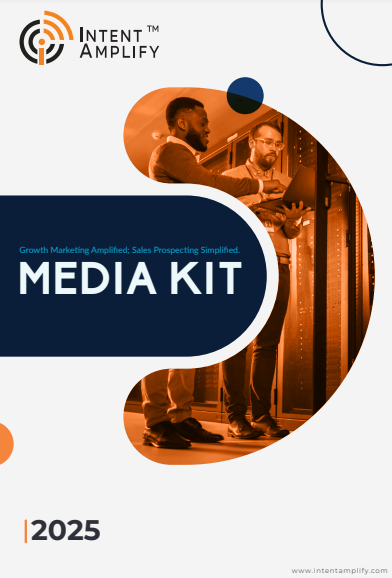
Marketing Vs Sales Qualified Leads: A Clear Guide for Better Conversion
- Last updated on: June 24, 2025
Ever passed a lead to sales and heard them say, “Not ready yet”? Or had marketing insisted that someone downloading a whitepaper is “definitely interested”? You’re not alone. In the high-speed world of MarTech, understanding the difference between Marketing Qualified Leads (MQL) and Sales Qualified Leads (SQL) isn’t just a box-ticking exercise; it’s the foundation for better conversions and smarter revenue growth.
This article walks you through the MQL vs SQL debate with real-world clarity, actionable strategies, and a few industry insights that will make you rethink how your funnel works.
What’s the Real Difference Between MQL and SQL?
Let’s start simple:
- MQL (Marketing Qualified Lead): These are folks who’ve interacted with your brand, maybe they downloaded a whitepaper, visited your pricing page, or signed up for a webinar. They’re interested but not necessarily ready to talk to sales.
- SQL (Sales Qualified Lead): These leads show signs that they’re not just curious, they’re considering buying. Think demo requests, detailed pricing inquiries, or a conversation where they mention budget or timelines.
A clear distinction between the two ensures that sales teams focus on serious buyers and marketing nurtures the rest, without anyone stepping on each other’s toes.
Why It Matters More Than You Think
- Marketing and Sales Need a Shared Language
When everyone agrees on what a “qualified lead” really means, it eliminates friction. It’s like both departments finally learning to speak the same language. No more wasted time chasing dead ends. - Better Resource Use
Sales reps shouldn’t be sifting through cold leads. Similarly, marketing shouldn’t be nurturing someone ready to talk about contracts. Segmentation and proper handoff help everyone stay focused. - More Conversions, Less Confusion
Companies that clearly distinguish between MQLs and SQLs see conversion rates increase by up to 53%, according to the 2025 Demand Gen Report on Lead Scoring.
The Numbers Behind It
- Average MQL-to-SQL conversion rate: Between 12% to 21%, depending on your industry. Firms in financial technology and enterprise SaaS tend to cluster near the peak of that range.
- Best-in-class performance: According to Forrester, some companies using behavioral scoring, AI, and rapid sales outreach report conversion rates above 40%.
- Speed is critical: Reaching out within 60 minutes increases your chances of connecting by a factor of 7. That’s based on a Harvard Business Review study analyzing over 1 million leads.
- Lead nurturing delivers: Companies with structured nurturing strategies generate 50% more sales at 33% lower cost per lead, per Forrester via HubSpot.
A Quick Scenario
Let’s say you’re a cybersecurity SaaS firm. Your website gets 2,000 leads a month. One CISO from a mid-market company downloads your compliance checklist and attends a webinar. She doesn’t reach out directly but visits your pricing page three times over the next week.
This isn’t a cold lead. But she’s not asking for a sales call either.
That’s your classic MQL. Let’s say she taps that “Book a Demo” button – then what unfolds? She becomes an SQL. That’s when your sales team should get the alert, jump in, and move her forward – before your competitor does.
Setting the Right Criteria: Think Score, Not Guesswork
If you’re still deciding who qualifies as what based on gut feeling or instinct, it’s time to move to a scoring model. Here’s how top MarTech teams do it:
| Action | Lead Type | Score |
| Downloaded an industry report | MQL | +5 |
| Attended a product webinar | MQL | +7 |
| Visited the pricing page repeatedly | MQL | +8 |
| Requested a demo | SQL | +10 |
Once a lead’s score crosses a certain threshold, your CRM should notify sales instantly. No guesswork. Just structured handoffs that work.
Where Things Often Go Wrong
- Premature Handoffs: Just because someone filled out a form doesn’t mean they’re ready. Jumping too soon can spook leads.
- Slow Response Time: Time is everything. A Harvard Business Review found, even a short delay dramatically lowers your odds of engaging. Make “follow-up within 1 hour” a rule, not a guideline.
- Misalignment Between Teams: If marketing thinks a blog subscriber is an SQL and sales don’t agree, you’ve got a breakdown. Ensure resolution through agreed-upon terms and structured follow-ups.
How AI Is Changing the Game
AI tools are now making MQL vs SQL decisions smarter and faster:
- Predictive Lead Scoring: AI models can analyze thousands of data points to determine how likely a lead is to convert. It beats gut instinct every time.
- Behavioral Tracking: Platforms can detect patterns, like frequent visits to pricing or repeated video views, and bump leads into the SQL zone automatically.
- Sales Alerts and Workflows: Tools like Salesforce, HubSpot, or Demandbase can trigger alerts the moment a lead hits SQL status, ensuring no delay in follow-up.
So, What’s the Takeaway?
Understanding the difference between MQLs and SQLs isn’t just a “nice to have” – it’s essential if you want to improve your conversion rates and keep your sales and marketing teams focused on what they do best.
If there’s just one takeaway you keep in your back pocket, make it this.
MQLs need nurturing. SQLs need action.
Confuse the two, and you’ll stall. Treat them right, and your pipeline will flow.
FAQs
1. When does a curious prospect turn into a ready-to-buy customer? That’s where the real difference between MQL and SQL begins.
An MQL has shown interest (e.g., downloaded content), while an SQL has shown buying intent (e.g., requested a demo).
2. What’s a good MQL-to-SQL conversion rate?
Depending on your sector and the strength of your leads, it’s not uncommon for solid conversion rates to land anywhere between 12% and 21%. Top firms report up to 40%.
3. How fast should I follow up with an SQL?
Ideally, within 60 minutes. Leads grow cold fast, and first-touch speed significantly improves your chances of closing.
4. Can AI help qualify leads better than traditional methods?
Yes. AI-based scoring systems use behavioral and demographic data to predict which leads are most likely to convert, t—often with more precision than manual scoring.
5. How should I align marketing and sales around MQL/SQL definitions?
Start with a joint workshop. Define scoring models together, create shared documentation, and review performance regularly to refine your process.
Conclusion
If your pipeline feels slow or unpredictable, don’t just throw more leads into the top. Step back and ask: Are we treating MQLs and SQLs the right way, at the right time, with the right tools?
The most effective MarTech teams succeed by combining insight with intent, not just effort. And this simple, powerful distinction is often where smarter begins.
Contact Us for Sales





